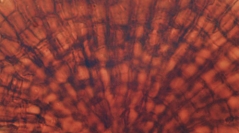

 Comptes Rendus Palevol
22 (28) - Pages 585-594
Comptes Rendus Palevol
22 (28) - Pages 585-594Microremains of fungi from Neogene deposits from the Gray Fossil Site (Tennessee, United States) and the Bełchatów Lignite Mine (Poland), similar to the enigmatic fossil-species Kutchiathyrites eccentricus R.K. Kar, 1979, were reconsidered as representatives of the modern mitosporic genus Mycoenterolobium Goos, 1970. A new combination, Mycoenterolobium eccentricum (R.K. Kar) G. Worobiec, n. comb., is proposed. The geographical and stratigraphical range and ecology of the fossil and modern Mycoenterolobium species are discussed. Investigated remains of Mycoenterolobium eccentricum (R.K. Kar) G. Worobiec, n. comb. document the first fossil record of this fungus from both Northern America and Europe, while the Bełchatów mine represents the northernmost known fossil and modern occurrence of the Mycoenterolobium genus. Both modern and fossil species of Mycoenterolobium seem to prefer warm (tropical to warm temperate), usually humid climates. They are associated with plant debris (mainly wood) decaying in a damp or aquatic environment. Mycoenterolobium eccentricum (R.K. Kar) G. Worobiec, n. comb. is suggested to be used as a non-pollen palynomorph proxy for palaeoclimatic and palaeoenvironmental reconstructions.
Europe, fossil fungi, Kutchiathyrites, Mycoenterolobium, Neogene, North America, palaeoecology, new combination